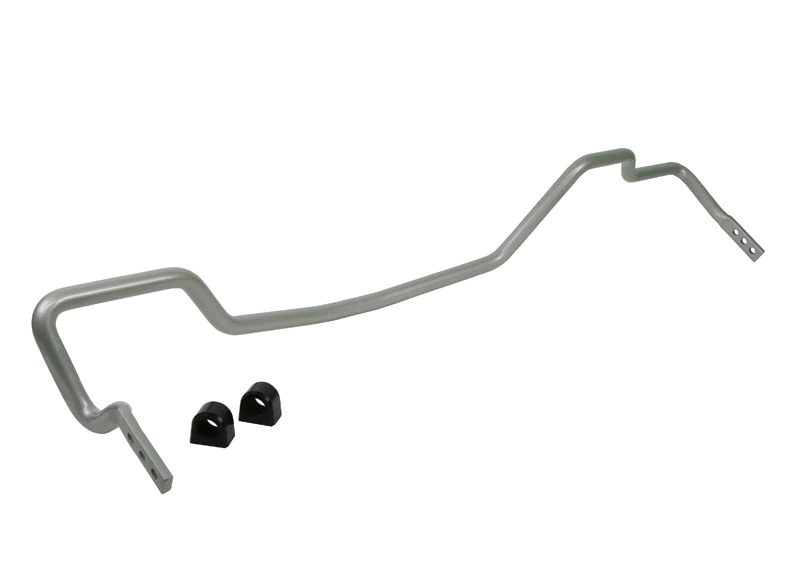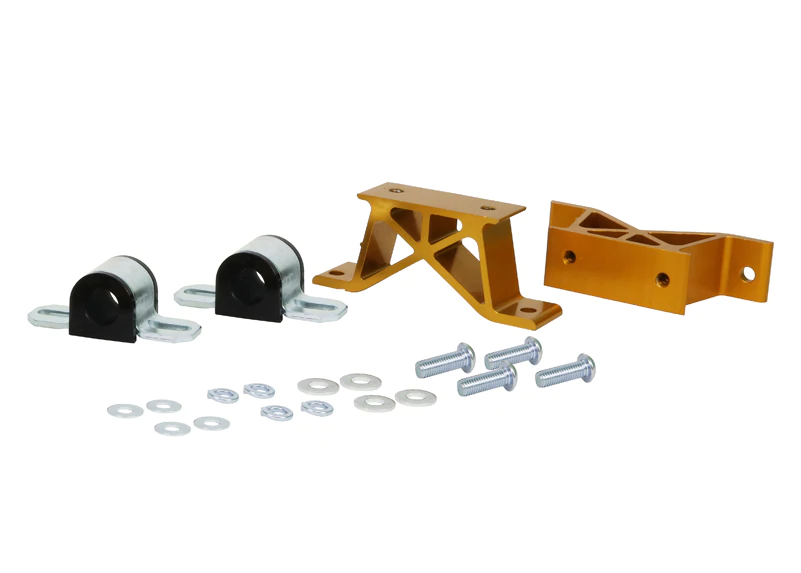Leaderboard
Popular Content
Showing content with the highest reputation on 03/12/22 in all areas
-
Many of the older models didn't have them. Only higher end models usually. Forester for example - early L models were not equipped while the S model was. You will likely need mounts and end links. GD3 points
-
In my personal opinion, ASE papers don't mean squat. In over a decade of being the face of my business - the guy you see at the counter and the guy that answers the phone - I have been asked a grand total of THREE times if I have ASE certifications, etc. In each case I explained what that really means and the customer brought me their car anyway. It's a waste of time and effort - much like college. I can get the same or better education for $12 in late fees at the public library and as regards "auto mechanics" - which isn't really a term I like - I prefer "machinist" - as in someone that is involved in building, understanding, and repairing machines in general - I don't really limit myself to automotive...... Oil viscosity and additive package is chosen by the manufacturer based on emissions, fuel economy, emissions, bearing loads, emissions, longevity, emissions, maintenance cost and interval, emissions...... oh and did I mention emissions? If you want the best protection then you really only need to consider the load on the engine. Higher viscosity resists being squeezed out of the bearings. That's why the higher power engines (turbo and H6) specified 5w30 rather than the 5w20 used in the newer NA engines. The construction of the engine internally - oil pump sizing, bearing clearances, etc - is no different between engines that "recommend" different viscosities. In general the manufacturer chooses the thinnest oil they can "get away with" that has the lowest additive package they can "get away with" and thus have the lowest emissions and least damage to emissions equipment (which has a federally mandated extended warranty). If you look at many of the high powered factory cars.... BMW for example ran 10w60 on many of their high powered turbo engines from the factory. We use exclusively 5w40 and higher viscosity in all our oil changes unless there is specific concern about voiding a warranty, etc. Anything above about 400 HP we use 5w50. I have been using this policy on EVERY car we service - probably about 1000 oil changes a year - for about 8 years at this point. We are an Amsoil dealer and our go-to oil is the 5w40 Euro Full SAPS formula (black lid). The high power cars get the 5w50 Signature Series. We use WIX filters. We set all the oil change intervals for 6,000 miles and we always remind people to check their oil level regularly. I have lots of customers making 500+ WHP on Amsoil and I have torn down a LOT of engines - I have never seen a single failure of one of our engine builds that could be logically linked to a failure of the oil to prevent metal-to-metal contact. And for that matter - 99.999% of every engine failure I have seen has been related to the engine running low on oil, or being starved of oil. The type of oil matters very little when it's littered with debris from bearings that are starved of oil every time you take a hard corner (low oil level) and from people starting and driving with the engine cold and the bearing clearances half what they are at operating temp and the oil filter in bypass just shoving all that oil and debris through the bearings like a lapping compound. You want the engine to last? Run a high quality synthetic and a filter with an up-front bypass design. Don't drive it hard when it's cold - you'll just put the filter in bypass and main bearing clearances are tight when cold. Keep it topped off. Change it on a regular schedule. The Brand of the oil is pretty much irrelevant. Amsoil, Redline, Royal Purple, Lubri-Moly, Motul, etc..... it's pretty much all just marketing. They will all do the same job if you keep it full and clean. Do this and the engine will live plenty long enough to leak from everywhere and lose the HG's and end up being junk since it's cheaper to just get a JDM replacement. Timing components aren't a concern and none of them can read the label on the bottle of oil you pour in. GD2 points
-
As the title says, I can't find the rear sway bar under the car. I'm looking at buying this upgrade, but I'm not sure where it'll go. Anybody have any information on this? Will I have to buy the brackets? Reason being, my rear tires are rubbing whenever I take corners fast, OR if there's weight in the back.1 point
-
The ones I've done, the places they run most of the time get nice and polished. The worn one, I could see a small difference in the curve of the surface. Some balls in one had marks on them. Mostly depends on if they got dirt in them while running with torn boots, etc.1 point
-
Yes most can be machined and returned flat and true. Reseal the breather plate on the back of the block.1 point
-
Let's start with the good take on this - an 88 hatch is a sweet ride! Get it, and keep it, drivable and enjoy driving it. It's really dependent on you finding someone, there's no "going rate" for a job like this. It varies wildly and many shops/mechanics don't want to touch stuff like that. Body shops aren't a good fit, they'll be pricey and have plenty of insurance work. But ask around and see if there's any where that's willing to give it a rough patch job for a reasonable cost. I'd ask friends/shops/mechanics who they know that might be a good fit, don't just ask if they'll do it. Actual, legitimate, long term repair is for hard core DIY or restorations, or custom work only. In many areas that's a high priced sector of the automotive world, not something you're going to get quick lube oil change rates for. With a little effort and cost you should enjoy a solid 5 more years out of this vehicle. Also - if it's driven in the snow/treated roads or salty ocean front environments - copiously spray/wash the underside of the car off as much as you can. At a bare minimum spray the under side of the car in the spring a few times as the weather begins to warm. Or frequently if it's in a garage that's considerably warmer than outside. chemical reactions happen exponentially in relation to temperature as described by the Arrhenious equation. So wash the salt off and particularly wash the salt off before/when it gets warmer out if you can't do it regularly. The bad news. That's essentially non-repairable. A proper repair would be thousands of dollars and finding someone to do it wouldn't be easy. Of course call some custom shops or body shops and get a quote or ask who does that kind of work to see what happens locally. A friends German landrover looks like that - all his body panels are immaculate and perfect. No rust - except underneath on similar parts as yours from sitting in grass. No body work needed - $20,000 quote just to fix the rusty frame. It's almost impossible to get it all out - and it WILL come back. I've tried. It's crazy how far back it goes, how you have to keep cutting and cutting, and then there's areas you can't cut without getting into more stuff or much bigger job than you wanted. It's a loosing endless battler without massive overhaul. Whatever you see - it's 10x worse. And unless you're really good - it'll come back.1 point
-
Owners manual is a good source for viscosity. When searching here - search his user name and "Amsoil", his most detailed responses involve that. Google search might work better but it should be readily available here too. And you might try searching his posts for EZ30 in case he's ever pointed it out. Oil opinions are 99% of the time not given by someone acutely aware of failure modes, causes, metallurgical deterioration, interplay of lubricity degradation and heat escalation, oil degradation, or any kind of engineering/large scale data analysis, when it comes to oil induced issues. This isn't a big deal except when we consider how obsessed people are with oil choices. Except maybe GD. Hours and hours of internet reading/watching is just a bunch of half-baked (at best) opinions and picking whatever sounds good, there's nothing scientific, engineering related, or data driven about that. But here's the thing - it doesn't matter. Run synthetic, never let it get low, and change it on time and you'll never have an oil induced issue. Outside of "don't be dumb", follow the owner manual, there's no chance of viscosity giving any meaningful benefit (ignoring fuel mileage) for an average daily driver. Change two different EZ30's from new with 5w30 and 10w30 for 200k and if it's never run low or past interval there will be no difference. EZ-30 guts/materials/clearances are commensurate with all modern subaru engines. There's nothing special regarding the EZ30 related to oil viscosity. There's not much information or consensus because it doesn't matter. That engine runs 250,000 miles all day long on the cheapest on sale oil you can find if it never gets low, and is changed frequently. Technically even conventional oil is fine if you change it a lot, but synth is so good and forgiving of potential running hot, or low oil, or other compromising events, and longer change intervals, it's silly not to run it. There are two minor oil related considerations on the EZ: 1. the timing chain tensioner supplies 2. the EZ30 has 6 cylinders - so failure or incidence rates of unforgiving circumstances will be 50% higher when speaking about the combustion chamber just mathematically speaking. Keeping the oil clean, full, and changed regularly is key to those two points far more than viscosity...again, follow the owners manual.1 point
-
how about bad hose... there should not be oily residue at that junction.1 point
-
Get it evacuated. Change the compressor and Evap o-rings and then service the system. A good AC Shop will pull a vacuume and then properly service it. Worth the money. I have pulled a slight vaccume with my hand pump and then serviced the system based on the specified amount of coolant. It works.1 point





